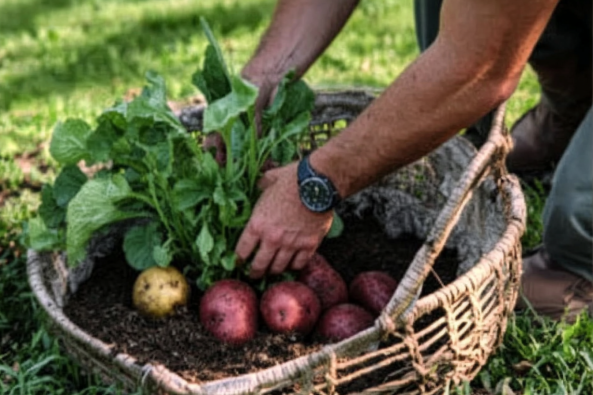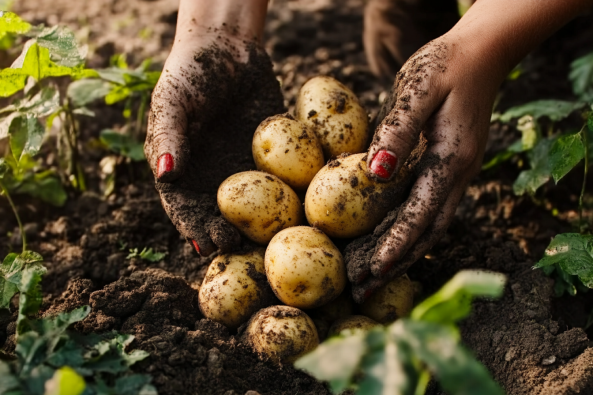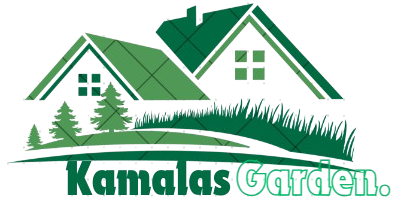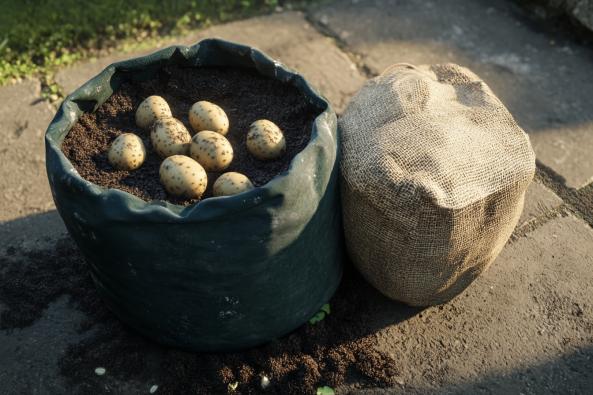Why Grow Potatoes in Containers?
Growing potatoes in containers is an excellent solution for those with limited space, as it allows for portability, easy maintenance, and higher yields in controlled conditions.
Benefits of Using Grow Bags & Containers
- Space-Saving: Ideal for patios, balconies, and small gardens.
- Better Drainage: Reduces the risk of waterlogging and rot.
- Portable & Flexible: Move the containers to optimize sunlight exposure.
- Pest & Disease Control: Minimizes exposure to soil-borne diseases and pests.
Choosing the Right Grow Bag for Potatoes

Selecting the best grow bag is crucial for ensuring a healthy potato harvest.
Best Materials for Grow Bags (Fabric vs. Plastic)
- Fabric Grow Bags: Provide excellent aeration and drainage, preventing root rot.
- Plastic Containers: Retain moisture better but require extra drainage holes.
Ideal Size & Capacity for Healthy Potato Growth
- 10-15 gallons: Best for growing multiple potato plants.
- At least 12 inches deep: Allows proper root expansion.
Where to Buy or How to DIY Your Own Grow Bag
- Purchase Online: Many gardening retailers offer high-quality grow bags.
- DIY Options: Repurpose burlap sacks or heavy-duty grocery bags with proper drainage.
Best Potato Varieties for Container Gardening
Certain potato varieties perform better in containers due to their compact size and fast-growing nature.
Early, Mid-Season, and Late-Season Potatoes
- Early-season: ‘Red Norland,’ ‘Yukon Gold’ – mature in 60-80 days.
- Mid-season: ‘Kennebec,’ ‘Purple Majesty’ – mature in 80-100 days.
- Late-season: ‘Russet Burbank,’ ‘German Butterball’ – mature in 100-130 days.
Compact & High-Yield Varieties Suited for Grow Bags
- ‘Yukon Gold’ – compact and versatile.
- ‘Red Pontiac’ – great for smaller spaces.
- ‘Fingerling Potatoes’ – thrive in containers with minimal space.
Preparing Seed Potatoes for Planting
Chitting (Pre-Sprouting) Seed Potatoes
Why Chitting Improves Growth
- Speeds up germination.
- Ensures stronger, healthier plants.
Step-by-Step Guide to Sprouting Before Planting
- Place seed potatoes in a cool, well-lit area.
- Leave them for 2-4 weeks until they develop 1/2-inch sprouts.
Cutting & Curing Seed Potatoes
How to Divide Large Seed Potatoes for Maximum Yield
- Cut potatoes into pieces with at least one eye per section.
- Let cut pieces dry for 24-48 hours before planting.
Preventing Rot by Properly Curing Cut Pieces
- Dust with sulfur or wood ash to prevent fungal infections.
How to Plant Potatoes in Grow Bags (Step-by-Step Guide)

1. Choosing the Right Location
- Sunlight Requirements: Potatoes need at least 6-8 hours of direct sunlight daily.
2. Preparing the Soil Mix
- Best Soil Composition: Use a mix of potting soil, compost, and perlite.
- Ideal pH & Nutrient Balance: Aim for a slightly acidic pH of 5.0-6.5.
3. Planting the Seed Potatoes
- Depth: Place seed potatoes 4-6 inches deep.
- Spacing: Position 2-3 seed potatoes per 10-gallon bag.
4. Hilling Potatoes as They Grow
Why Adding Soil Boosts Yield
- Encourages more tuber growth.
- Protects growing potatoes from sunlight exposure.
When & How to “Hill” Potato Plants
- When plants reach 6 inches tall, add 3-4 inches of soil.
- Repeat every 2-3 weeks until the bag is full.
5. Watering & Drainage Tips
- How Much Water Potatoes Need: Keep soil moist but not soggy.
- Preventing Overwatering & Root Rot: Ensure proper drainage by using fabric bags.
6. Fertilizing for a Healthy Harvest
- Best Organic Fertilizers: Compost tea, bone meal, and fish emulsion.
- When & How Often to Fertilize: Apply a balanced fertilizer every 3-4 weeks.
How to Care for Potato Plants in Containers
- Pest & Disease Management: Monitor for aphids, blight, and fungal infections.
- Ensure Strong Growth: Prune any weak or yellowing foliage.
How to Harvest Potatoes from Grow Bags
When to Harvest Potatoes
- Early potatoes: 60-80 days after planting.
- Late-season potatoes: Wait until the foliage turns yellow and dies back.
How to Harvest Without Damaging Tubers
- Gently tip the grow bag over onto a tarp.
- Hand-pick the potatoes to avoid bruising.
Storing Your Potato Harvest for Long-Term Use
Best Storage Conditions to Prevent Sprouting & Rotting
- Store in a cool, dark place (45-50°F).
- Keep in ventilated baskets rather than plastic bags.
How to Cure Potatoes Before Storing
- Let potatoes dry for 1-2 weeks in a well-ventilated area.
- Brush off dirt but do not wash until ready to use.
Common Mistakes to Avoid When Growing Potatoes in Grow Bags
Overwatering or Underwatering Issues
- Overwatering causes root rot.
- Underwatering leads to small, stunted tubers.
Poor Soil Choices & Nutrient Deficiencies
- Avoid heavy clay soil – it retains too much moisture.
Not Hilling Potatoes Properly
- Exposure to sunlight turns tubers green and toxic.
Final Thoughts: Start Growing Your Own Potatoes Today!
Growing potatoes in containers is a simple, rewarding experience that works for any gardener. With the right grow bags, proper soil, and a bit of patience, you can enjoy fresh, homegrown potatoes in even the smallest spaces. Start small and expand your container garden as you gain confidence!
Related Posts You May Like
- When Should You Plant Potatoes? The Best Time for a Successful Harvest
- When Should You Plant Potatoes? The Best Time for a Successful Harvest
For more container gardening tips, visit this guide on growing potatoes in containers.

